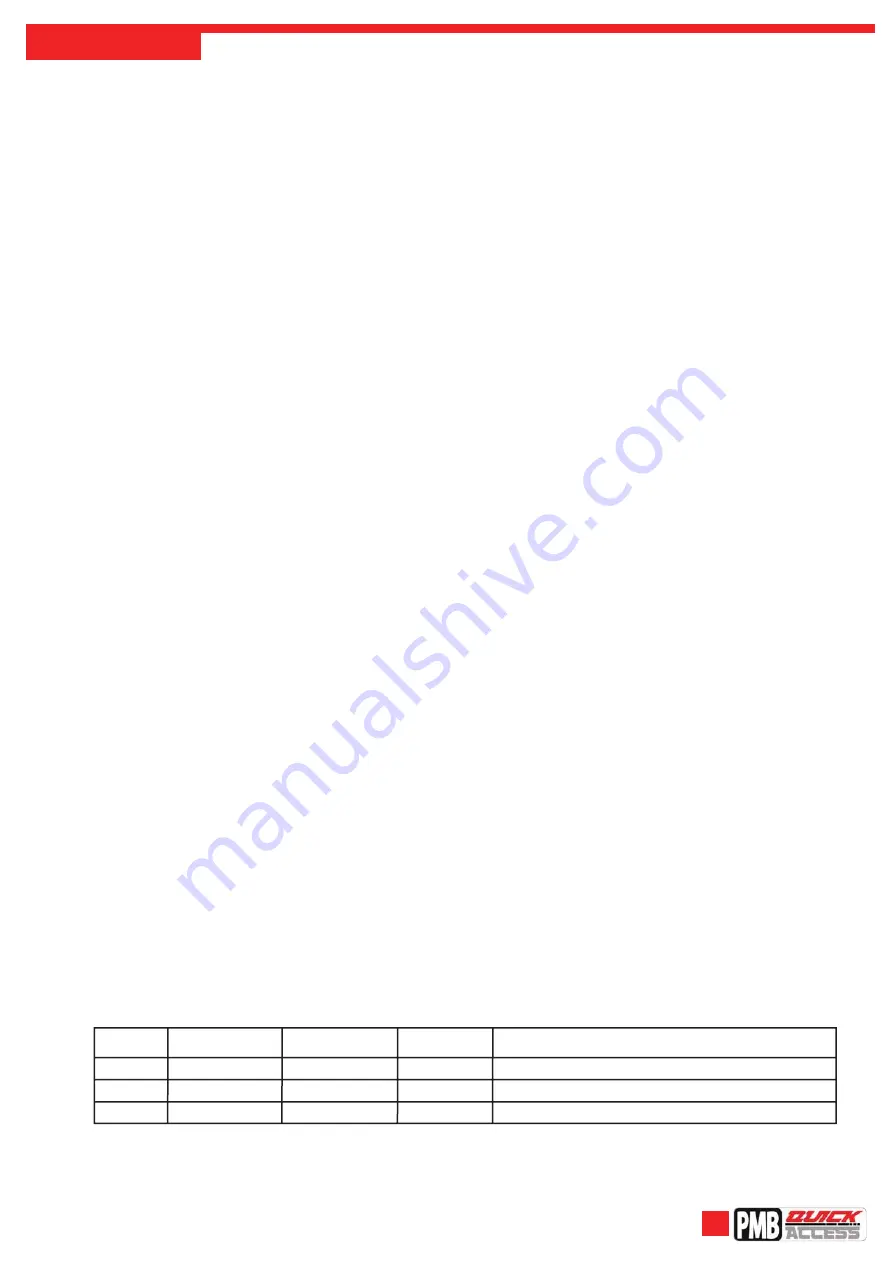
USAGE ADVISE
Erection
-
E
nsure that the instruction guide has been read and understood by anyone using the tower. If in doubt,
please contact your supplier.
-
C
heck that all components are on site and that they are functioning correctly. Do not use damaged or
incompatible tower component. Make sure that you have the correct amount of components.
-
C
heck if the ground on which the mobile access tower is to be erected and moved, is capable of
supporting the tower. Always take into account ground conditions. On soft ground a suitable base
must be provided.
-
T
ower must always be climbed from the inside during assembly and using the built in ladder provided
during use.
-
N
ever lean a portable ladder against the tower, only use the built in ladder provided.
-
D
o not use the adjustable legs to gain extra height, they are for levelling the tower only.
-
I
t is not permissible to attach bridging between a tower and a building.
-
D
o not use boxes or step ladders on the platform to gain additional height.
-
I
t is forbidden to jump onto platforms.
-
T
owers used outdoors shall, whenever possible, be secured to a building or other structure.
-
T
ower shall only be moved manually and only on firm level ground which is free of obstacles. Normal
walking speed shall not be exceeded during relocation.
-
F
or linking tower or special application always consult your supplier.
-
I
t is not permissible to attach and use hoisting arrangement on towers unless specification provided
by design.
Lifting Equipment
-
T
ower component should be firmly secured by reliable lifting material (e.g. rope), employing a reliable
knot (e.g. clove hitch), to ensure safe fastening.
Stabilizers/Ballast
-
S
tabilizers and ballast weights shall always be fitted when specified.
-
B
allast is used at the base to stabilize towers against overturning. The quantity schedule shown the
recommended stabilization. In circumstances where there is restricted ground clearance for stabilizer,
contact your supplier for advice.
-
I
f must be solid material (i.e. not water or loose sand) and should not be positioned to overload individual
legs. Ballast should be secured against accidental removal, and be supported on the lowest rung of the
bottom frame.
Dismantling tower
-
K
eep to the instructions in this guide.
-
N
ever throw equipment from the tower.
-
A
lways lower equipment down to ground level by rope or hand.
-
A
lways report damaged equipment. Equipment should be maintained in a serviceable condition.
Wind Speed
-
W
hen wind exceeds Beaufort force 4, cease using the tower.
-
I
f wind is expected to reach Beaufort force 6, tie tower to a rigid structure.
-
I
f winds of Beaufort force 8 are forecasted, dismantle the tower or remove to shelter.
2
Force
Peak mph
Peak km/h
Peak m/s
Guidance
Moderate breeze-raises dust & loose paper
Strong breeze-difficult to use umbrella
Gale force-walking is difficult
8.1
13.9
20.8
29
50
74
18
31
48
4
6
8















